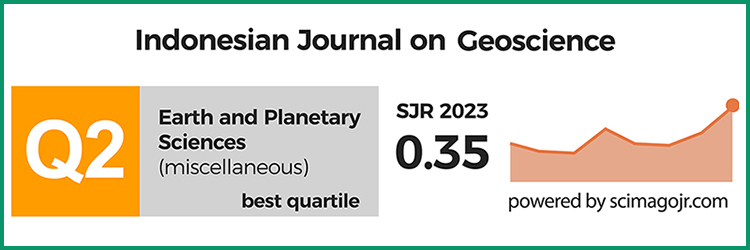Karst Aquifer Characterization by Means of Its Karstification Degree and Time Series Analysis (Case: Ngerong Spring in Rengel Karst, East Java, Indonesia)
DOI:
https://doi.org/10.17014/ijog.11.1.45-60Keywords:
karst aquifer, karstification degree, time series analysis, Rengel karstAbstract
The purpose of this study is to define the characteristics of the karst aquifer, which is approximated by the parameters of (1) degree of karstification (Dk) and (2) time series analysis (cross-correlation and auto-correlation). This research focuses on the Ngerong Spring, the largest spring in Rengel Karst, East Java, Indonesia. Pendant rain gauge RG-3M and HOBO U20L-02 water-level data loggers were installed over one year with a recording interval of 15 minutes. Furthermore, after one year of time-series discharge data was obtained, the discharge recession coefficient was applied to make the recession formula. It was then used to estimate the karstification degree scale from 1 to 10. The aquifer memory system and the spring response to rainfall events were analyzed by auto-correlation and cross-correlation. The results of this study indicate that the karstification degree (Dk) of the Ngerong Spring system is 4.8-5.0, with one laminar and one turbulent flow subregime type. The aquifer system comprises a subregime with turbulent and laminar flow, where the substantial role in groundwater discharge plays the subregime with laminar flow. Meanwhile, time series analysis shows that the capacity of aquifer storage in the Ngerong Spring is large enough. It has a memory effect for 26.41 days, followed by a rapid response to rainfall events within 8 hours. Compared with several other karst sites in Java, the Ngerong Spring aquifer has the youngest development level with the best storage and the slowest release.
Downloads
Published
Versions
- 17-05-2024 (2)
- 07-02-2024 (1)



















